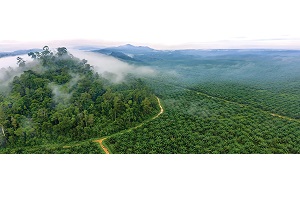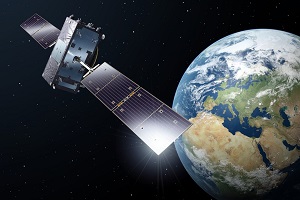Countries globally are coming together to address the financial implications of climate change and deliver solutions for those communities most at risk. It is now vital to deliver ubiquitous access to smart technologies that will mitigate the effects of environmental change, especially in developing nations. Eric Menard, VP of strategy and business of Astrocast, explains why innovative systems integrators (SIs) have a key role to play.
Counting the cost
The financial implications of climate change are taking centre stage. One of the biggest issues raised during COP 27 (twenty-seventh session of the conference of the parties) was reparation for the three-and-a-half billion people living in countries highly vulnerable to climate impacts, with the UN chief making a call for progress on adaptation and building resilience to future climate disruption. He insisted that countries need to build on the promises made in COP 26 of [$40 billion (€36.71 billion)] in adaptation support by 2025, with needs estimated to reach more than [$300 billion (€275.30 billion)] dollars a year by 2030.
Adaptation will require far more than handing over funds to devastated communities. From improving food security and providing clean water to reducing the environmental impact of farming and tracking the risks to life associated with weather events, innovation is now essential.
But how can effective change be achieved without a detailed understanding of the current situation? How can farmers manage the transition to a different climate and embrace smart farming or agriculture 4.0 practices without the information required to support more methods or the ability to remotely monitor livestock, equipment and soil?
Capturing knowledge
IoT has a key role to play in supporting change and innovation. Farmers, for example, are exploring IoT to remotely monitor soil moisture and temperature as part of the move to reduce water consumption while optimising productivity, as well as track animal health and well-being. Environmental tracking is allowing climate experts to monitor the speed with which change is occurring – from the reduction in emissions created by farming to the recovery of deep-sea habitats and remote snow, glacier and permafrost monitoring stations in Central Asia.
Further, monitoring is transforming lives in countries with limited clean water resources. Access to Water has distributed more than 150 million litres of clean water to Senegal, where around 20% of the population has no access to clean water. The charity uses filtration devices that not only treat dirty, polluted or brackish raw water but also collect vital information about water quality and equipment usage to support both proactive maintenance and planning.
When 15% of the world is covered by terrestrial communication networks, far too many of the most vulnerable communities remain unconnected and unable to benefit from this innovation. For SIs, the addition of satellite connectivity to IoT solutions is capable, enabling companies to take tried and tested solutions to new markets.
Proactive approach
The availability of a satellite connection designed specifically for widescale IoT deployment has transformed the opportunity. But does the business case stand up, especially when the cost/ benefit argument is under incredible scrutiny?
Most operational IoT applications do not require the continuous or real-time communication associated with high-cost, power hungry satellite links that have made such solutions completely unaffordable. Instead, critical solutions such as tracking the location of farm animals, measuring the earth moisture content or monitoring the health of vulnerable habitats, can be delivered with lower cost intermittent satellite communication.
Minimal power consumption and the ability to link to solar power are key considerations when attaching an IoT sensor to a water filter, to livestock, or farm equipment many miles from maintenance services. Ten-year battery life is a factor in building a business case, as is antenna design of equipment and battery life. Two-way communication is also valuable, for example if the SI wants to increase the frequency of recording in a specific location from once to twice a day.
Capable business case
The model is working. Affordable, reliable connectivity across the globe is extending the use of intelligent farm control systems, for example, allowing existing sensors to be used to record and control information remotely over long distances. Using sensors that are connected to the cloud, and IoT-based digital agriculture, factors such as weather, temperature, humidity, rainfall data, water level, water quality and soil moisture are helping to enhance the effectiveness of farming and maximise plant health.
Satellite IoT (SatIoT) is enabling farmers to digitise animal tracking, so that they can accurately establish the location of their herds, allowing them to better manage livestock. For example, they can track movement patterns and create geo-fences to establish when livestock has drifted into the wrong areas.
Commercial beekeepers, meanwhile are using SatIoT for colony management, ensuring continual information irrespective of the hives’ locations, such as remote areas of California where farmers rely on rented bee colonies to pollinate the majority of the world’s almond harvest. Real-time data from active hives, including temperature, humidity, movement, and even sound frequencies is passed to the cloud for monitoring and analysis, providing beekeepers with the information required to track hive health.
Conclusion
Change is happening. Countries and organisations globally are actively investing to support change, especially within agriculture. With funding commitments of [$8 billion (€7.34 billion)], The Agriculture Innovation Mission for Climate (AIM for Climate), for example, seeks to accelerate innovation in ‘climate smart’ agriculture especially aimed at small-holder farmers in developing economies, new technologies, agro-ecological research and methane reduction.
However, without ubiquitous access to network connectivity, there will be an unfair difference in the speed with which countries, organisations and individuals can make changes and adopt smart farming or agriculture 4.0 practices. This will create even greater disadvantages in populations already disproportionately affected by climate change.

With the addition of low-cost SatIoT, IoT solutions previously restricted by the lack of terrestrial/cellular connectivity in locations that are, by their very nature, outside the mainstream areas of network coverage, can now be delivered to accelerate essential and equitable change.
The author is Eric Menard, VP of Strategy and Business of Astrocast.
Comment on this article below or via Twitter: @IoTNow_OR @jcIoTnow










